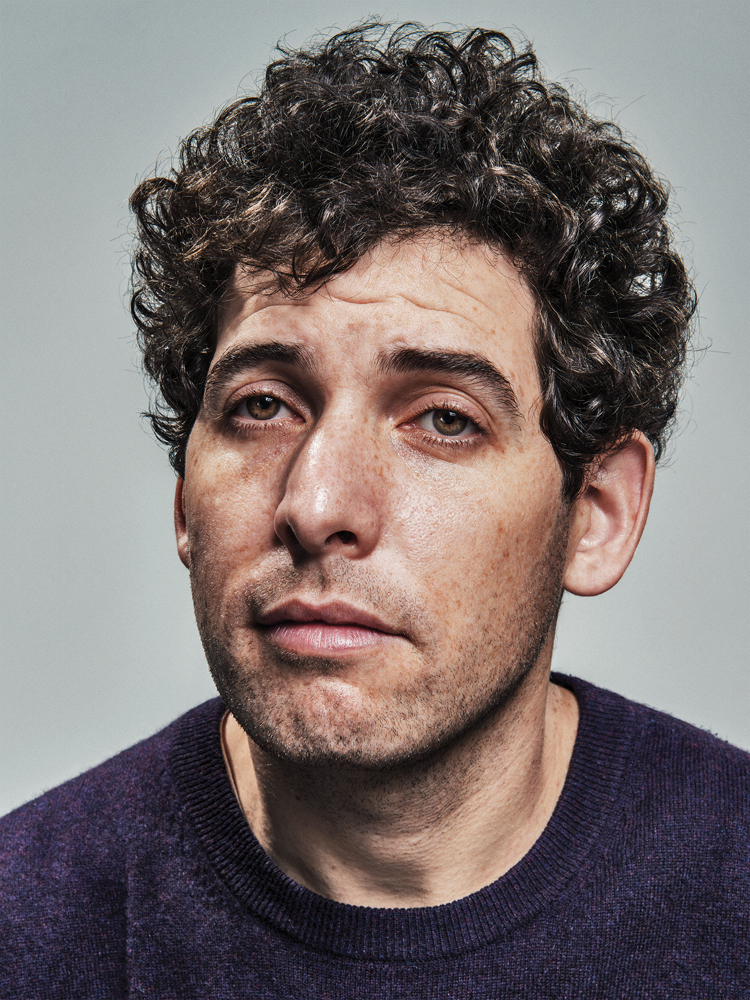Darren Bader

ABOVE: DARREN BADER IN NEW YORK, JANUARY 2014. SWEATER: BADER’S OWN. STYLING: VANESSA CHOW.
A mere two months before the Whitney deadline, 35-year-old artist Darren Bader doesn’t know what he’s making for the Biennial. In the time he’s had to consider his project, much of the museum’s exhibiting spaces have been snatched up by other artists. Mostly all that remains is a secondary, off-site location or an ephemeral, nonmaterial approach—two options well suited to the Connecticut-born artist’s relentlessly alternative approach to his craft. “It certainly is a valid approach to be chosen for a prestigious show and participate in no conspicuous way,” Bader says. “But for the Biennial, I would like to make something.”
Bader’s work is created using unfettered, unstructured methods, with freedom going to all variables of his productions. They are often liberally described as sculpture. In his 2012 show at MoMA PS1, he exhibited live kittens up for adoption, and one of them was adopted under the title cat made out of crabmeat. The artwork, he says, is “taking the title at face value and believing in the inner workings of an otherwise superficial entity.” In 2013 at Art Basel Miami, he showed more than a dozen copies of Villette, the 1853 novel by Charlotte Brontë. “That was just a placeholder,” he says. “The piece is anywhere between two and 18,000 copies of that edition of the book. The collector is encouraged to collect up to 18,000 copies and keep them on hand.”
Bader’s productions also involve writing, artist books, and video, which he considers the germ for his pieces. His first artistic ambition was to be a film director, and he made videos composed of long takes of objects both inert and in motion. Eventually, he stopped looking through the lens and saw objects as sculpture, allowing everything in his environment to be material for his art. “Anything you can think about as a finite, packable entity is sculpture,” he explains.
Bader has the kind of panoramic, definition-bending sensibility that characterized Marcel Duchamp, Gabriel Orozco, and more recently, Tino Sehgal. Bader’s 2012 book, Life as a Readymade, is a manifesto-like text on this approach (“an open letter to anyone who considers himself [sic] an artist”) and includes phrases such as “Art is a state of mind and experience understood by any number of people at any number of moments.” At times, the reaction to this wild open-mindedness can only be laughter—not the goofy, out-loud kind, but the private lung spasms that cough up after a curious, misunderstood, maybe all-too-telling joke.
For more from the 2014 Whitney Biennial, click here.






